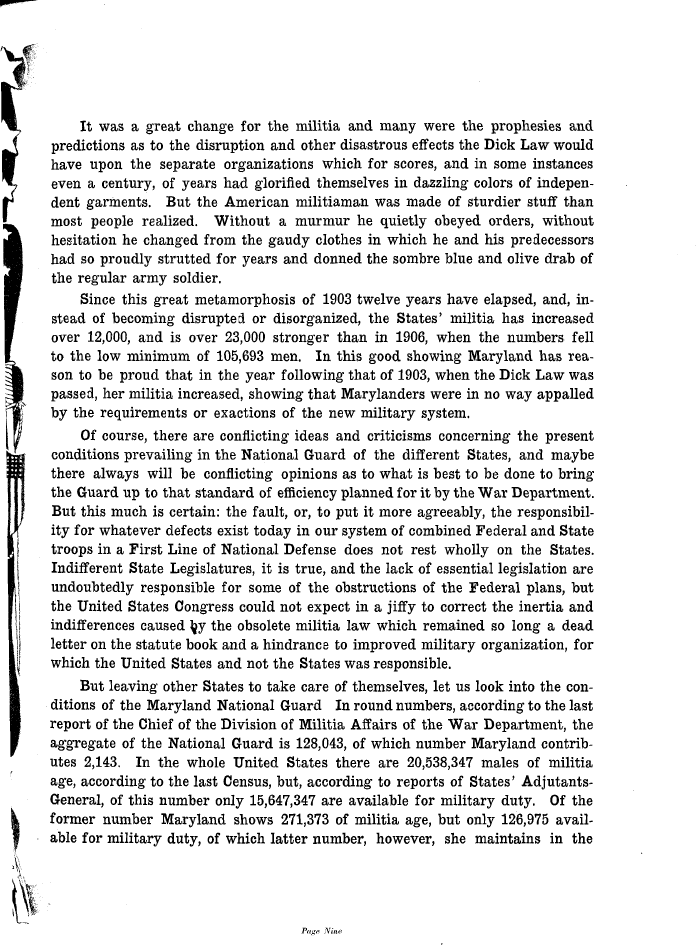 |
||||
 |
||||
| It was a great change for the militia and many were the prophesies and predictions as to the disruption and other disastrous effects the Dick Law would have upon the separate organizations which for scores, and in some instances even a century, of years had glorified themselves in dazzling colors of independent garments. But the American militiaman was made of sturdier stuff than most people realized. Without a murmur he quietly obeyed orders, without hesitation he changed from the gaudy clothes in which he and his predecessors had so proudly strutted for years and donned the sombre blue and olive drab of the regular army soldier. Since this great metamorphosis of 1903 twelve years have elapsed, and, instead of becoming disrupted or disorganized, the States' militia has increased over 12,000, and is over 23,000 stronger than in 1906, when the numbers fell to the low minimum of 105,693 men. In this good showing Maryland has reason to be proud that in the year following that of 1903, when the Dick Law was passed, her militia increased, showing that Marylanders were in no way appalled by the requirements or exactions of the new military system. Of course, there are conflicting ideas and criticisms concerning the present conditions prevailing in the National Guard of the different States, and maybe there always will be conflicting opinions as to what is best to be done to bring the Guard up to that standard of efficiency planned for it by the War Department. But this much is certain: the fault, or, to put it more agreeably, the responsibility for whatever defects exist today in our system of combined Federal and State troops in a First Line of National Defense does not rest wholly on the States. Indifferent State Legislatures, it is true, and the lack of essential legislation are undoubtedly responsible for some of the obstructions of the Federal plans, but the United States Congress could not expect in a jiffy to correct the inertia and indifferences caused |jy the obsolete militia law which remained so long a dead letter on the statute book and a hindrance to improved military organization, for which the United States and not the States was responsible. But leaving other States to take care of themselves, let us look into the conditions of the Maryland National Guard In round numbers, according to the last report of the Chief of the Division of Militia Affairs of the War Department, the aggregate of the National Guard is 128,043, of which number Maryland contributes 2,143. In the whole United States there are 20,538,347 males of militia age, according to the last Census, but, according to reports of States' Adjutants-General, of this number only 15,647,347 are available for military duty. Of the former number Maryland shows 271,373 of militia age, but only 126,975 available for military duty, of which latter number, however, she maintains in the PIILV Nine. |